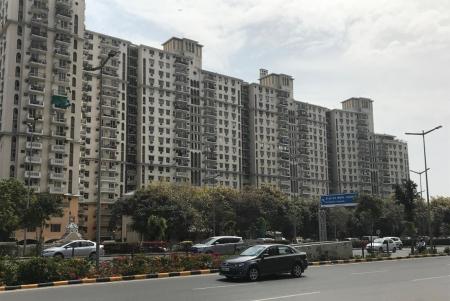
A view of high rise apartment blocks in Delhi with a "soft storey" for parking on the ground floor making them more vulnerable to earthquakes
By Denis McClean
DELHI, 7 October, 2019 - It’s comfortable, affordable and carries 2.5 million passengers every day relieving to some degree the pollution and traffic congestion which is the bane of the city’s life.
The Delhi Metro as a stand-alone asset is an example of how to build to last when it comes to quality resilient infrastructure in the heart of one of the world’s most active seismic zones.
The last time Delhi experienced earthquake tremors in 2014, the metro trains came to a halt within minutes as the state-of-the art sensors kicked in.
“It has been built to the highest seismic standards. All this is acknowledged but it has also succeeded in bringing great risk along with it as an unintended consequence,” says Garima Jain, Urban Risk and Resilience Specialist at the Indian Institute for Human Settlements, who has carried out an in-depth study of the Delhi Metro.
This risk becomes all too apparent if you take the Yellow Line from the heart of historic old Delhi to the futuristic environment of the new districts which have sprouted up along the rail corridor in recent years. Apartment buildings and office blocks dot the skyline soaring to over 20 stories in height in some cases.
A key element in attracting people to live in these new commercial hubs was to create housing and provide them with parking usually on the ground floor which was enforced by a planning bye-law. The unfortunate outcome which India’s National Disaster Management Authority is now grappling with, is that many of these buildings have what is called a “soft storey.”
“Essentially you only have the columns and no walls at the ground level. Columns not supported by walls means that the whole thing just falls down in an earthquake. This was a big issue in the Nepal earthquake. A lot of buildings that failed had a soft storey built in. They are now going to change the bye-law so that there is no requirement to provide a soft storey for parking,” said Ms. Jain.
She points out that “the behavioral momentum is there now to provide parking in the construction industry. Something else has to be brought in so that people are not required to build their own parking. People should be incentivized to rely less on cars and the Metro needs to increase its capacity.”